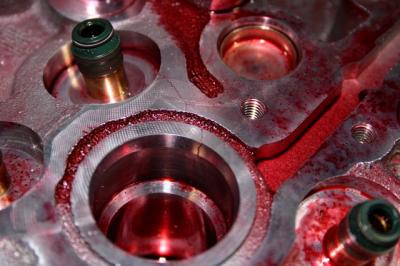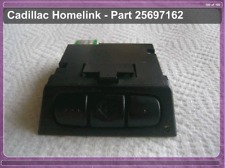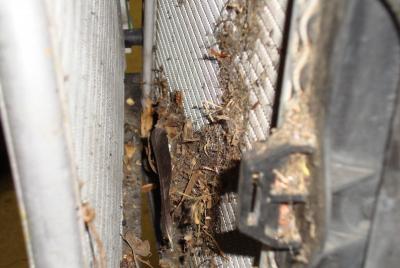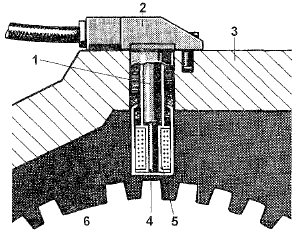Welcome to RennTech.org Community, Guest
There are many great features available to you once you register at RennTech.org
You are free to view posts here, but you must log in to reply to existing posts, or to start your own new topic. Like most online communities, there are costs involved to maintain a site like this - so we encourage our members to donate. All donations go to the costs operating and maintaining this site. We prefer that guests take part in our community and we offer a lot in return to those willing to join our corner of the Porsche world. This site is 99 percent member supported (less than 1 percent comes from advertising) - so please consider an annual donation to keep this site running.
Here are some of the features available - once you register at RennTech.org
- View Classified Ads
- DIY Tutorials
- Porsche TSB Listings (limited)
- VIN Decoder
- Special Offers
-
OBD II P-Codes - Paint Codes
- Registry
- Videos System
- View Reviews
- and get rid of this welcome message
It takes just a few minutes to register, and it's FREE
Contributing Members also get these additional benefits:
(you become a Contributing Member by donating money to the operation of this site)
- No ads - advertisements are removed
- Access the Contributors Only Forum
- Contributing Members Only Downloads
- Send attachments with PMs
- All image/file storage limits are substantially increased for all Contributing Members
- Option Codes Lookup
- VIN Option Lookups (limited)

fpb111
-
Posts
436 -
Joined
-
Last visited
Content Type
Profiles
Events
Forums
External Paint Colors
Downloads
Tutorials
Links Directory
Collections
Store
Posts posted by fpb111
-
-
-
Most common cause for intermix in 3.4ltr seems to be cracked head. These can be fixed. Also change your water pump while you are repairing the head. *Dharn55 was the first to post a successful fix on Rennlist.com
MORE INFO HERE:
http://forums.rennlist.com/rennforums/996-forum/712349-cracked-head-2.html
From another thread:
*
"OK I will jump in now having suffered and fixed an intermix. Talking with Flat 6 is not a bad idea and I have great respect for Jake Raby. The challenge is that the best option if cost is not an issue will be a Flat 6 engine, there probably are no better engines out there. However they start at over $18,000 and quickly go up from there, plus you have to transport the car there and back. So we are talking about spending $20,000+++ to put an engine is a car that is worth about $20,000 and won't be worth that much more when the work is done. For many people that just does not make sense.
I think jake is also fixing cracked heads now, but it is still expensive with the shipping, etc., and probably not his recommended approach.
Probably the first thing to do is to determine what the source of the intermix is. You can check the oil cooler, they can crack and I certainly checked mine, but it is almost never the source of the problem.
As for the AOS, I guess it could cause a intermix, but I have never heard of this being the source of this kind of a problem.
It could be a D chunk and you might see this with a boroscope, or by taking the head(s) off but I think the most common source of this problem is a cracked head. If you check the threads on my repair you will see lots of information and pictures. It is probably a crack at the inner exhaust valve spring seat on cylinder #1 or # 6, mostly likely #1. If you remove the engine and the cam cover, cams and lifter body you can usually see the crack, start with the 1-3 head.
These cracks can usually be fixed. I spent $500 including a valve job on that head, but that was a few years ago so the price is probably higher now. I also have a new in the box 1-3 head that I will sell for $1,600, at the dealer they are over $3,000.
It took me about 40 hours or so to do the work, and this was in my garage with no prior experience on the M96 engine. If I had to do it again I would guess about $15-20 hours. You need some special tools, either make them or buy a set. I can also rent you the tools you need. I spent another $800+ on parts directly related to the crack, and more to replace other things while I was in there (coils, plugs, tubes, AOS,etc.).
Now some question whether an engine with intermix can be saved or is worth saving due to damage to bearings etc. I will tell you that my intermix was really bad. The coolant was the consistency of pudding, and the oil was like a milkshake, and I don't know how long it was like this. I discovered the problem when the coolant light started flashing. And when this happened in 1998 the dealer,my Indy and Jake all told me had no choice but to put in a new engine. At that time Jake said that cracked heads could not be fixed, but now we all know that in many cases they can be. I am sure that the bearings, rings, etc. on my car are not as good as they would be if I had never had the intermix. But I have good oil pressure and compression and spent my time and about $1,500 and now have almost 23,000 on the car since the fix, it runs strong ad I am happy. If it had required a new engine the car would be in a junk yard now. I could not have afforded a new engine and would have questioned spending what the car was worth on an engine.
I have now worked with many others on fixing their cars with intermix problems and it is being done on a regular basis.
If you want more I formation, etc., let me know, I would be glad to help if I can.
__________________
Doug
Current: 2000 996 C4 Cab, Ocean Blue w/Savannah Beige"
-
They are available where Beru are on backorder?
-
Has anyone seen or have info on the roller bearing IMS "kit" shown in the VERTEX ad on pg 39 of the 2013-2014 Excellence buyers guide?Evidently European Parts Solution (EPS) makes it. According to the ad there is an installation video at the EPS site, couldn't find it??
-
-
or remove the idler and pull it from the top
http://forums.rennlist.com/rennforums/996-forum/767121-water-pump-replacement-tip.html
-
You could buy one of these on EBay and mount it in one of your cubbys with double sided tape bring the wires out the back and hook them to the phone connector.. That way no battery changing and multiple devices can be controlled. Mine works great. Brown = Ground, yellow/black = Telephone mute, green/black = switched 12v, red/green = un-switched 12v Here is one for $15
-
Post a picture of the connector
-
-
-
Don't know the capacity. If you are concerned you could always cut a piece of 3/8 or 1/2 inch plywood to span the width of the rear "shelf" the seat backs have created to spread the load more.
-
Fold down the seats?
-
Headlight washers only work when the headlights are on. Are the lights on when you try them?
-
when you let out the clutch and the engine goes "WEE" and the car doesn't.
+1 on stuff, tire dust etc., burning off of the mufflers.
The air-cooled guys have "O du' oil" The water cooled guys have "O du'" tires
-
From one of Loren's Posts:
Well, you can hope it is a bad connection and try looking at and cleaning the electrical connection.To precisely determine the crankshaft position, a reference mark signal is required.Engine speed and reference mark are monitored via an inductive sensor. A larger gear notch in the ring gear (on the flywheel) serves as reference mark. The larger notch induces a higher voltage in the sensor.A soft iron core partially bundles the magnetic field produced by the permanent magnet which then enters the space and closes again through the magnetically conductive parts of the engine. A steel toothed ring moving past the face of the sensor affects the magnetic field. The change in the magnetic field induces an electric charge that is used by the DME.A fault code is stored in memory when no crankshaft position sensor signal is recognized within 60 crankshaft revolutions and the engine speed is above 500 rpm.
 1 - Permanent magnet2 - Sensor housing3 - Engine case4 - Soft iron core5 - Inductor coil6 - Reference markCould be the sensor connection, bad sensor, magnet has fallen out of the flywheel or even a bad DME (but not likely).Test the sensor as follows:Remove connector. Connect ohmmeter to sensor connector, pins 1 and 2.Display at 20 °C: 0.8 - 1.0 k ohmsConnect ohmmeter to sensor connector, pins 1 and 3.Display: 00 infinite ohmsHope this helps some...
1 - Permanent magnet2 - Sensor housing3 - Engine case4 - Soft iron core5 - Inductor coil6 - Reference markCould be the sensor connection, bad sensor, magnet has fallen out of the flywheel or even a bad DME (but not likely).Test the sensor as follows:Remove connector. Connect ohmmeter to sensor connector, pins 1 and 2.Display at 20 °C: 0.8 - 1.0 k ohmsConnect ohmmeter to sensor connector, pins 1 and 3.Display: 00 infinite ohmsHope this helps some... Loren
RennTech.org
PCA member since 1978
-
Bad crank position sensor.
-
We fought a similar balance problem on a set of 1/2 worn front tires.
They would balance well run smoothly and then then go wildly out of balance and then mostly smooth out again. I finally gave up and bought two new tires. When the shop pulled the tires about 1 cup of water ran out of one and maybe 1/2 cup in the other one?? We figured that I must have added it with air from a source that never drained the air tank. We checked the rears and they had no water.
-
Looks like he replaced everything that could have been involved.
-
I think I misunderstood the OP original question/statement.
"The front rims heat up to about 170-180F after a standard drive (not using brakes)"
Are we looking at Rims or tires? That temp on treads is pretty much normal.
It is interesting that all of the front hubs run about 15 - 20% hotter than the rears.
Looking at our data I'm not convinced that nbeihl has a problem. His temps are higher than ours but uniform at ~20% hub/rim difference.
He might have a little more brake drag generating heat that the rotors dissipate into the hubs and under the rims.
Consider that the rotors have internal channels that pull "*cool" air into the center that is expelled as heated air out of the rotor's outer diameter against the rim inner circumference.
* Cool is relative here, 180 degree radiator exit air is cool to 3-400+ degree rotor temps after a brake application.
The hubs mostly dissipate heat through convection into the wheel and back into the rotor when it cools after braking heats things up. I wonder if the OZ rims have the same surface area in contact with the hub and convection properties to pull heat out and dissipate it as the light weight 5 spoke rims that we have do?
Nbeil it would be interesting if you could get access to a set of Porsche 5 spoke rims to do a comparison even just on the fronts.
Are you running 18" x 8" on front and 18" x 10" on rear?
-
Ahsai,
I never checked tire temps on the road and never really looked at rim temps. My rims are pretty thin with big space between the spokes. Wonder what the Twists or a denser rim would measure?
I have raced some and been an instructor for 25 years and measured many tread temps across a tire when setting up a car. Typically track tires don't really start to work until they get to ~180 deg "tread" temp and go away pretty quickly above ~240.
We need to know what pressures/tires/rims (OZ Vella Chrome rims? How thick, spokes etc) and accuracy of the measuring device OP is using. His measurements are so uniform that I suspect what he is seeing is still OK.
-
I got two runs on the highway today. Rims never got above 120 deg F Tire treads did, but we are not looking at the tires.
Rim measured with a LASER equipped noncontact thermometer at the spoke lip interface. Hub at the hub wheel interface. 18" 5 spoke light weight Porsche rims. Michelin PS tires 37 psi F 44 psi R
1st run @ 69 degrees F, ambient temp according to dash gauge.
Cold start temperatures =
72 LF - 71.0 RF
71.2 LR - 71.2 RR
~20 minutes @ 75 mph - ambient 69 deg
Rim temp
112 - 119
105 - 105
Hub temp
131- 135
110 - 112
Pressures
43 - 42
50 - 50
25 min @ ~70mph - ambient temp 79 deg
Rim temp
118 - 116
105 - 107
Hub temp
134 - 137
111 - 109
Also 1 slow, ~35 - 40 mph, 30 minute run with 1 stop sign in the middle.
Rim Temp
110 - 108
101 - 101
Hub temp
116 - 120
107 - 107
Interesting note the front fenders measured ~106 deg F ~4" behind the headlights after the slow run. Top down no air on.
-
If it is nice here think I can get out for a run tomorrow.
-
Tell him to bring plenty of blankets or other soft packing material.
-
Mine is tough too. The release in in the center back side of the connector. I have to push the connector towards the air cleaner to relieve the pressure while pressing the top edge of the latch to get it to release.






Air Conditioning - can't locate source of loud noise from bearing
in 996 Series (Carrera, Carrera 4, Carrera 4S, Targa)
Posted
Two condensers, two radiators, two fans, two speeds on each fan. one set behind front bumper on each side. Fans come on as soon as you turn air on. Fans run at low speed when engine needs more airflow to stay cool, switch to high speed when things start to get HOT.